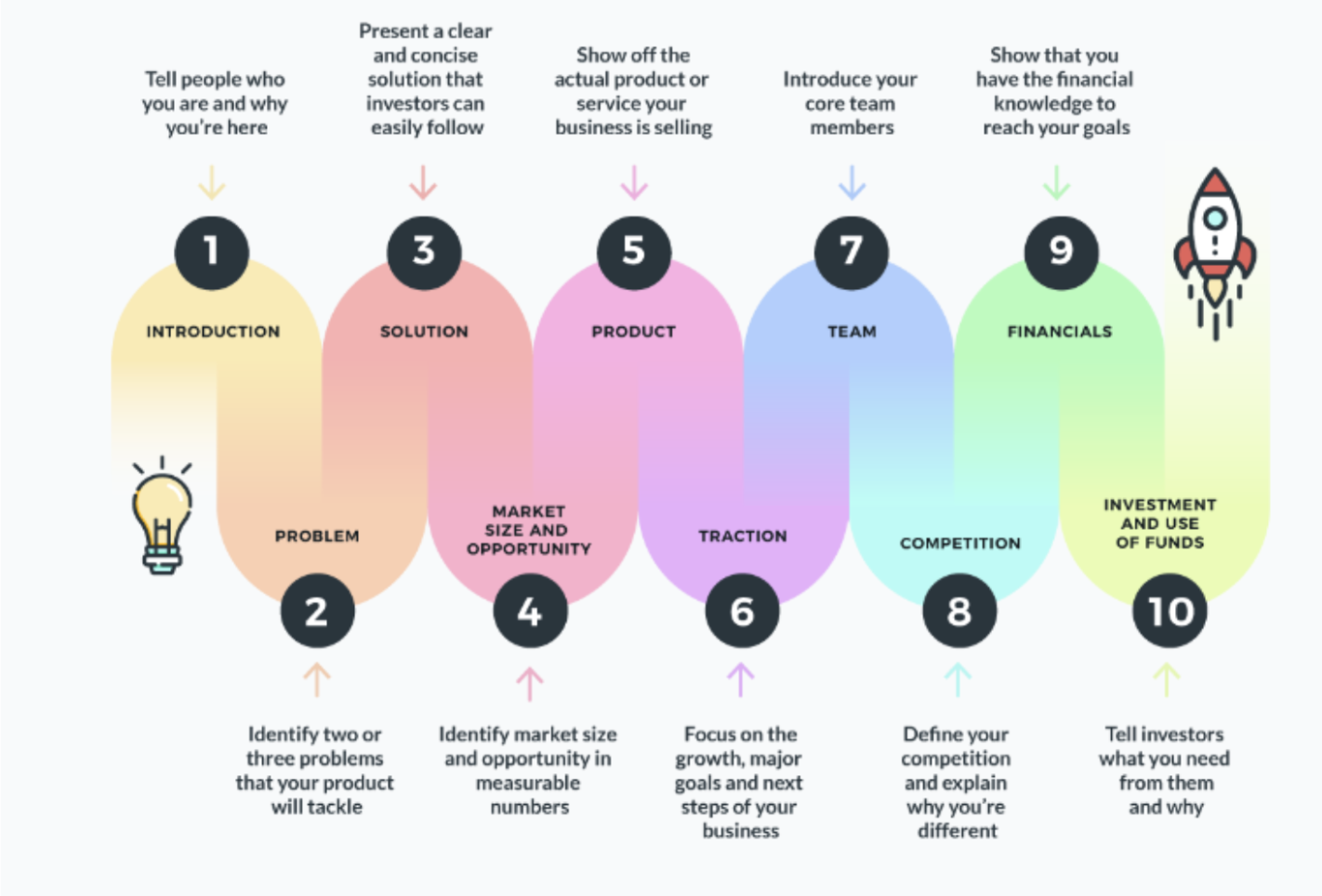Pitch Decks: Crafting, Presenting, and Best Practices
As an entrepreneur, you are already well versed on the structure, plan, products/ services and growth trajectory of your business. This information is often complex but will need to be communicated in an accessible way to third parties who may be interested in investing in your business. This is sometimes referred to as a pitch deck.
What is a Pitch Deck?
A pitch deck is a professional presentation which provides an overview of your company to invite potential to better understand your business and (hopefully) invest in it.
It is a common misconception that a pitch deck is designed to secure funds. Rather, it should be seen as a means of promoting your business and securing further meetings. Securing the funds for your business is a multi-step process. A good, detailed and informative pitch deck is the first step. You want to present investors with an idea that persuades them to engage with you , your business and your product or service.
The Benefits and Drawbacks of Pitch Decks
Although there are multiple benefits of a pitch deck, including fundamentally creating a marketing roadmap for the business and tailoring the business objectives to specific investors, there are some drawbacks to pitch decks. A summary of these are listed below.
Limited time
Pitch decks are usually presented in a limited amount of time, which means that you may not have the opportunity to go into significant detail about your business or investment opportunity. It can therefore oversimplify complex concepts which require greater explanation for better understanding of the problem the business is aiming to solve.
Limited audience engagement
Pitch decks are typically presented in a one-way format, with the presenter speaking and the investors listening. This can make it difficult to gauge the level of audience engagement and adjust your pitch accordingly. Tone and audience-specific methods of communication are therefore fundamental.
Limited flexibility
Once a pitch deck has been created, it may be difficult to make changes or updates to it on the fly. This can make it difficult to respond to unexpected questions or objections from the audience.
The Essential Components of a Pitch Deck
The above picture highlights the essential elements of what should be included in a pitch deck.
The Dos and Don’ts of Pitch Decks-
Common “dos and don’ts” for creating and giving a powerful pitch presentation.
The Design
DO use bullet points on slides
Remember this is a presentation which needs to be completed in a short amount of time. Make sure your pitch is brief and straight to the point.
Do not overwhelm your audience. Explain things in person rather than presenting them in your presentation.
DO NOT overflow your slides
Avoid overflowing your information by placing lots of text in one slide
We recommend using larger font sizes, visuals and a readable colour scheme to create an engaging and informative presentation.
DO include your contact details
Make sure you include the contact information for yourself and your business at the end of your presentations for those who may want to reach out with enquiries.
DO NOT add too many team members
In your Team Slide stick to core members. Too many executives can be overwhelming. Investors only want to know who is leading the ship.
Do use between 10 and 20 key slides.
The Presentation:
DO tell a story
Make sure to give your audience an engaging narrative that allows them to understand your business and why you are in the business.
DO NOT focus on only the statistics
Statistics in the pitch deck provide useful information. This information is only valuable to you and your argument where you can build a narrative around it. Show the bigger picture of why this information is significant, such as a gap in the market.
DO elaborate and minimise as you see fit
Not only the content of the slides are important, but how you present that information is key.
As you are speaking, make sure to gauge your audience, taking into consideration their interests and what they most care about.
Be personal- show personality and do not be boring and stiff.
DO NOT just read from the slides
Tailor your presentations to keep the audience engaged and avoid reciting your presentations word for word.
Remember, your investors can read and are learned in startup and investment.
For a visual example - here is Facebook’s 2004 pitch deck
Author: Euan Campbell -
Author: Euan Campbell -
In partnership with
DISCLAIMER
This article has been written by law students for the sole purpose of providing informative insight. The information in this article is intended for educational purposes only and does not constitute legal advice, nor should the information be used for the purpose of advising clients. You should seek independent legal advice before relying on any of the information provided in this article.
Sources
Sheikh M, ‘What is a Pitch Deck? Examples, Tips and Templates’ (Visme, 17 Jan 2023)
<https://visme.co/blog/what-is-a-pitch-deck/#how-to-create-a-pitch-deck> access 24th May 2023
Indeed Editorial Team, ‘What Is a Pitch Deck? Definition and Tips’ (Indeed, 22 July 2022)
<https://www.indeed.com/career-advice/career-development/pitch-deck> accessed 25th May 2023


